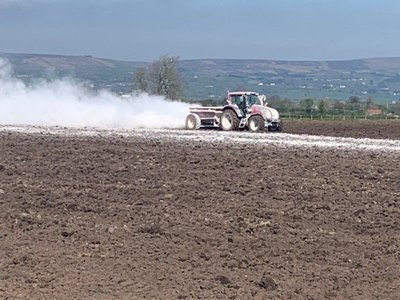Bar Tech April 2021
Welcome to the April BarTech with thoughts, tops tips and advice from the UK Grass Experts.

Welcome to the April BarTech with thoughts, tops tips and advice from the UK Grass Experts.
As social media is filled with photos and videos of silaging across parts of the country, there is no doubt leafy silage with higher dry matter intake will result in better feed intakes, resulting in higher liveweight gains and improved milk solids and milk yield in beef and dairy animals respectively. Farmers who are making their first cut early as possible will reap the benefits of top-class forage later this year.
Whilst a lot of farmers can only dream of making first cut silage in April due to ground and weather conditions and many other factors, our top silage tips will help deliver quality silage later in the year.
A few simple steps of good silage planning will help achieve this, start by asking the following questions;
Once these three questions are answered, fields on the farm can be marked off and a cutting date set. The remaining area of silage land can be managed accordingly or used to produce forage.
Step 1. For good silage management, by early Spring soils should have been tested, slurry applied and fertiliser spread. As with grazing swards, it is not simply a case of closing the gate and waiting for the grass to grow.
Step 2. Assess your silage swards and address issues;
Have they reacted well to slurry or fertiliser?
Are some of your swards performing better than others? If so, do you need to think about re-seeding or overseeding a field later in the season?
Do you have any soil compaction issues that you could possibly address after first cut?
Do you have broad leaved weeds?
All of these issues can be addressed between cuts if necessary so it is important to get out and look down to see how your grass is performing.
Step 3. Decide a first cut date
When aiming for high silage quality mowing should commence as seed heads are emerging, Silage quality falls rapidly after grass heading. The diagram* below illustrates how vital it is to make the correct decisions when deciding a date for your first cut.

*Teagasc
Step 4. Assess the first cut quality.
There are many factors that can affect the quality of your silage after it has been mown. Do you need an additive or not? Should swards be tedded out to allow wilting or should they be allowed to lie in their row? A sward tedded will increase the dry matter of a crop by approximately 7% more than a 3 metre row in a 24hr period and 19% more in a 48hr period. Care must be taken not to make your grass excessively dry. In an ideal world, a sward should be tedded out for 24 hours before lifting or left in its row for 48hrs to achieve 30% DM silage. Anything over 33% DM will not necessarily improve animal performance.
Step 5. Consider Ph, N & K levels as well as soil fertility.

If you feel a sward is not performing quite as well as others, remember, there are several factors that could be affecting its yield. The first step to quality silage is PH. Optimum soil PH is 6.3, anything lower than this can result in poor response to P fertilizer and a reduced response to N & K. Excessive lime can also reduce P response so it is imperative to test soil and lime according to the results.
Low soil fertility can also have a dramatic effect on silage yields and quality. It can restrict growth of existing swards and will ensure that new reseeds will not perform. Unfortunately, soils with low fertility will have a reduced grass yield per day in comparison with those with high fertility. In effect, this means that mowing will have to be delayed on a field with low fertility to achieve target yields, in some cases by as much as 3 weeks. These swards will have long passed their heading date and unfortunately their quality has been sacrificed as a result. Regrowth after cutting on low fertility swards is poor, with their counterpart having better recovery and 3 weeks more regrowth for second cut.
Step 6. Is the grass variety the correct one?
If you are content that your soil fertility and PH levels are within range, take a look at your swards of grass and decide whether or not they are achieving everything that they should be. If a sward is performing well but you are concerned that it is getting too open, a simple over seeding operation will be sufficient to correct any issues. If the sward is looking tired, pale and is basically underperforming, then it is time to consider a complete reseed. Choose your grass varieties carefully taking into consideration;
Discover our range of grass, forage, clover, herb and legume mixtures for the agriculture sector.
Discover our range of grass, forage, clover, herb and legume mixtures for the agriculture sector.
Discover our range of grass, forage, clover, herb and legume mixtures for the agriculture sector.